Types of sarees in India vary as per the diverse regions and culture of this country. Various types of sarees are available in the Indian markets, which differ to a large extent when it comes to the fabrics, textures, colours, designs or the unique identity of these fashionable garments, particularly of the sarees belonging to the different Indian states. Silk sarees, printed sarees, traditional sarees, georgette sarees, fancy sarees and contemporary `Zardosi` sarees are a few amongst the vast number of Indian sarees. Northern India, Southern India, Eastern India and Western India comprise a wide variety of sarees which are favoured throughout the nation and also abroad.
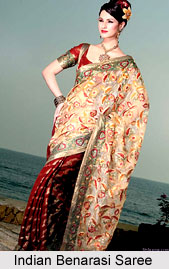 Banarasi Sarees
Banarasi Sarees
Benarasi sarees are essential requisites of every Indian bride and is one of the most famous sarees of Northern India. Indian markets consist of innumerable varieties of Benarasi sarees which are an integral portion of the Indian bride`s wedding trousseau. Intricate floral patterns, different motifs and colours dominate the style of these ethnic Indian sarees. These garments were introduced during the Mughal dynasty which is believed to have inspired most of the designs of Benarasi sarees.
Kota Sarees
Indigenous to Rajasthan, Kota sarees are manufactured in the local villages of this state and are also referred to as `kota doria`. Square patterns decorate kota sarees which are adorned with beautiful `zari` work along the borders. Initially, these costumes are woven in white, followed by vibrant hues.
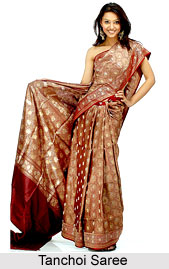 Tanchoi Sarees
Tanchoi Sarees
Tanchoi sarees originated outside the boundaries of India, particularly China and means `three Chhois` or brothers after the three Parsi brothers who are credited for adopting the technique of weaving Tanchoi sarees in Surat, Gujarat. It involves complex patterns of weaving on silk materials. Tanchoi sarees of Gujarat mostly have a satin finish.
Shalu Sarees
Shalu sarees belong to Uttar Pradesh and are quite similar to Benarasi sarees. These sarees are woven with silk threads and is popular only among the native ladies of the state of Uttar Pradesh.
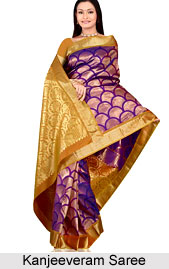 Kanjeevaram Sarees
Kanjeevaram Sarees
These sarees belong to the town of Kanchipuram in the state of Tamil Nadu. They are famous for their durability and their elaborate patterns woven by golden threads. Traditional designs as well as shot colours are favoured by Indian women. Heavy silk fabrics lend a unique appeal to these attractive sarees. Patterns of parrots and peacocks are the most common motifs in Kanjeevaram sarees.
Konrad Sarees
Konrad sarees of Tamil Nadu are also famous as `temple sarees` and are characterized by motifs of elephants, symbols of water, fertility, peacocks and wide borders. Traditional colours like off-whites, grey and brown are utilized while manufacturing these Indian costumes. North Indian ladies can also avail of some brighter shades.
Baluchari Sarees
Baluchari sarees are renowned textiles of Murshidabad, West Bengal and are available in beautiful shades like deep blue, purple, red and several other colours. They are over 200 years old and are made from silk, which impart in them a Benarasi-like appearance. However, zari threads are utilized to make Benarasi sarees while Baluchari sarees use silk threads. These sarees are covered with little `butis` and their borders portray stories from Hindu epics like Ramayana and Mahabharata.
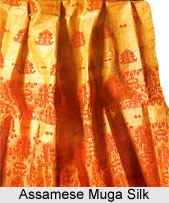 Muga Silk Sarees
Muga Silk Sarees
Muga silk sarees of Assam comprise the national attire of this Indian state. Glossy silk textures and traditional motifs are the speciality of these types of sarees. Sibsagar town in Assam produces muga silk sarees which possess a rich golden colour and mostly the traditional black and red designs.
Jamdani Sarees
These sarees are handwoven cotton sarees, which is an exclusive product of West Bengal that originated in the country of Bangladesh. Jamdani sarees are sometimes adorned with batik prints which have been revived in Shantiniketan. Other patterns include `kalki` shapes and geometrical motifs. The `Dhakai Jamdani` manufactured in Navdeep and Dhattigram located in West Bengal are quite reputable.
Maheswari Sarees
Maheswari sarees are the indigenous garments of Maheswar, located in Madhya Pradesh and is immensely popular throughout the length and breadth of the country. They are generally made from cotton or silk. Temples and palaces of Maheswari have inspire the patterns of these type of sarees. The body of the saree consists of stripes or checks while the pallu of these sarees are decorated with five distinct stripes. Various types of patterns like `chandrakala`, `chandratara` and others are adopted while producing these Indian costumes.
Sambalpuri Sarees
Sambalpuri sarees, as the name suggests, belong to Sambalpur in Orissa. Kathan border and elaborately designed pallu add to the beauty of these sarees. Floral motifs, fish or conchshell motifs are created on these sarees. Silk threads are used to produce them.
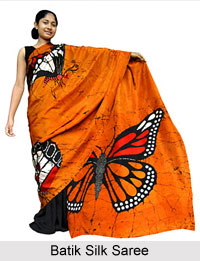 Silk Sarees
Silk Sarees
The basic silk sarees of India include the Ery silk, Tussar silk, Muga silk and Mulberry silk. The Indian states of West Bengal, Tamil Nadu, Andhra Pradesh, Orissa, Jharkhand, Chattisgarh, Karnataka and Jammu and Kashmir are famed for their excellent silk sarees. Mysore silk sarees, Paithani silk sarees, Pochampally sarees, Patola silk sarees, Chanderi sarees, Benarasi sarees, Bomkai sarees and some others are the traditional silk sarees of India.
Gharchola Sarees
These kind of sarees are purchased for marriages and contain lavish works of zari. They are dyed in Kutch region of Gujarat. Beautiful golden threads alongwith designs of lotus or peacocks are the special features of Gharchola sarees.
Venkatagiri Sarees
Venkatagiri sarees are found in silk and cotton and are produced n Andhra Pradesh. Golden threads woven in Jamdani techniques are the special characteristics of Venkatagiri sarees. The best quality of these sarees are wainarpati, nainder, gadiwal and others.
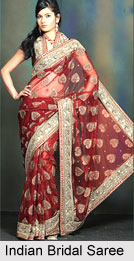 Batik Sarees
Batik Sarees
Batik sarees form the most ancient sarees of India which are above 2,100 years old. Multicoloured batik sarees exist in Indian markets which are embellished with various types of attractive patterns and motifs.
Bridal Sarees
Bridal sarees are in high demand in the entire country and have replaced traditional garments like Benarasi. Rich embellishments of zari work, embroidery, organza work, mirror work or cut work, pearl work, sequence work, kundan and innumerable other varieties are utilized to beautify the bridal sarees of Indians.
Indian women love experimenting with versatile types of sarees, which include the sarees of almost every region or state of the nation and sarees manufactured from numerous materials like cotton, silk, chiffon, taant, Benarasi, crepe, tissue, Paithani and a series of other excellent fabrics. Contemporary styled sarees are also in high demand, which are apt for wearing during festivals, social occasions or other public and religious events like marriages. Sometimes, modern with traditional touch is seen to create an illusion and satisfy the need of the modern customer as well. In recent times, many modern sarees created for the middle-class urban market use traditional ethnic odhni and sari patterns.





















